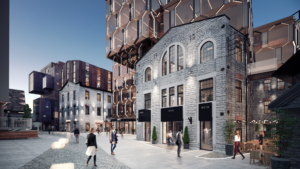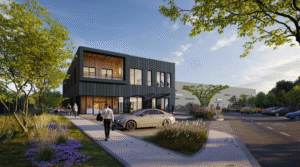This commercial real estate market overview focuses on the situation and trends in Estonia’s office, retail and service, as well as warehouse and production space segments in the first half of 2023.
For each segment, it presents the buildings completed or under construction this year, along with an overview of rental ranges and vacancy levels.
Office Space
The 2023 office market is characterized by a low volume of completed developments.
Due to rising interest rates increasing loan payments and fewer new office completions, rents for both high- and lower-grade office spaces have increased.
A-class office vacancy has risen as tenants have begun relocating to smaller and often newer office spaces, driven by remote work trends and cost-efficiency.
Fear of another surge in energy prices has increased demand for energy-efficient spaces.
Owners of older, less efficient offices are beginning to renovate in response to vacancy concerns, aiming for better energy performance.
Those who choose not to modernize their properties risk facing long-term vacancy unless they reduce rental prices.
In Tallinn, the office real estate market is concentrated in five key zones covering the bulk of A- and B-class spaces: the city center, Pärnu Road, the start of Mustamäe Road, Tehnopol in Mustamäe, and the Ülemiste business district.
Business real estate is increasingly expanding into North Tallinn, including the emerging areas of Noblessner, Kalamaja, and Volta, which are expected to grow significantly over the coming years.
The market is marked by strong competition between city center and suburban areas, as well as between under-construction and newly completed buildings.
As of mid-2023, Tallinn has over 1 million m² of modern office space.
A- and B-class office buildings in Tallinn
(Blue: A-class, Red: B-class; with a minimum commercial area of 2000 m²)
















